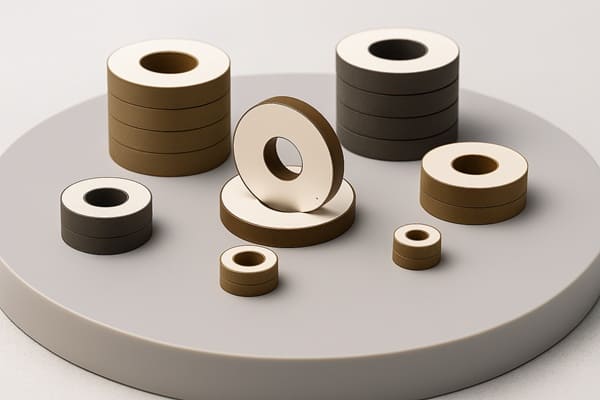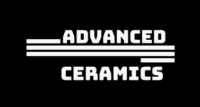Doping Modification of Ceramic Materials: Key Technologies for Performance Enhancement
Ceramic materials play a vital role in electronics, machinery, energy, and other fields due to their high-temperature resistance, strength, chemical stability, and multifunctionality. However, traditional pure ceramics often face performance limitations, making it challenging to meet the diverse and high-performance requirements of modern industry. In recent years, scientists have successfully achieved significant performance improvements through “doping” technology—introducing specific elements or compounds into ceramics to enhance their properties.
So, what is doping modification? What are the underlying principles? What factors influence the uniformity of doping? And how can the process be optimized to obtain ideal ceramic performance? This article will address these questions one by one.
At Advanced Ceramics Hub, we specialize in high-quality ceramic products with a variety of materials and specifications, ensuring optimal performance for industrial and scientific applications.

What is Doping Modification?
Doping modification involves adding small amounts of other elements or compounds into ceramic powders to alter the crystal structure and chemical composition, thereby changing the material’s properties. For example, adding certain elements can improve dielectric performance, mechanical strength, or thermal stability. This method is similar to seasoning—adding the right amount to “make the ceramic better.”
In practical applications, dopants can substitute original ions in the crystal lattice to form solid solutions or create secondary phases, enhancing the material’s toughness and functionality. For instance, doping barium titanate (BaTiO₃) can significantly improve its dielectric properties; similarly, Sb doping in lead-free piezoelectric ceramics (K, Na) NbO₃ enhances piezoelectric response and mechanical stability.
Principles Behind Doping Modification
Doping mainly achieves performance regulation through the following mechanisms:
- Lattice Substitution: Dopant ions replace specific ions in the lattice, altering lattice parameters and defect distribution, impacting electrical and mechanical properties.
- Formation of Solid Solutions: Different elements coexist within the lattice to create a uniform structure, optimizing performance.
- Secondary Phase Formation: When the doping concentration exceeds the solubility limits, micro-scale secondary phases form, which can improve fracture toughness or adjust electrical properties.
- Interfacial Regulation: Dopants influence grain boundary structures, strengthening interfacial bonding and enhancing overall stability.
The selection of dopants is critical; factors such as ionic radius, valence state, and electronic structure influence their behavior within the crystal. For example, ions like Zn²⁺, Cr³⁺, and Sm³⁺ can differently affect the color, refractive index, and performance of ceramics.
Why is Doping Uniformity So Important?
The effectiveness of doping heavily depends on its distribution within the material. Ideally, dopant elements should be uniformly dispersed in the ceramic powder; otherwise, issues may arise:
- Grain Boundary Segregation and Phase Separation: Leading to performance instability.
- Increased Dielectric Loss and Reduced Mechanical Strength: Due to uneven distribution.
- Functional Failure: Such as decreased piezoelectric response.
For example, uneven doping of bismuth in perovskite-structured ceramics can create defects and reduce efficiency. Similarly, in graphene-based field-effect transistors, non-uniform doping causes local charge accumulation, slowing response times and lowering signal-to-noise ratios.
Therefore, ensuring uniform dopant distribution is crucial for achieving high-performance ceramic materials.
Factors Affecting Doping Uniformity
To attain ideal doping uniformity, several factors must be considered:
1. Doping Ratio
- Below Solubility Limit: Dopants can uniformly integrate into the lattice, forming solid solutions.
- Exceeding Limits: Secondary phases and precipitates form, leading to uneven distribution.
Temperature
- Elevated Temperatures: Accelerate ion diffusion, promoting uniformity.
- Too High Temperatures: May cause abnormal grain growth or volatilization, reducing uniformity.
2. Synthesis Methods
- Hydrothermal, Sol-Gel Methods: Enable molecular-level mixing, enhancing uniformity.
- Mechanical Ball Milling: Breaks up agglomerates and improves dispersion through high-speed mixing.
3. Mixing Parameters
- Speed and Duration: Proper control avoids aggregation or excessive nucleation.
4. Doping Sequence and Concentration Gradient
- Gradual addition: Prevents local over-concentration.
5. Structural Regulation
- Lattice distortion, electronic concentration adjustment, and interface engineering: Achieve performance optimization.
How to Optimize Doping Processes?
Based on these factors, a systematic process optimization strategy can be developed:
- Control Temperature Wisely: Ensure sufficient diffusion without causing excessive grain growth.
- Select Appropriate Synthesis Methods: Such as sol-gel or hydrothermal techniques to improve element dispersibility.
- Adjust Mixing Conditions: Guarantee thorough blending to reduce agglomeration.
- Gradually Add Dopants: Manage concentration gradients to prevent inhomogeneous precipitation.
- Use Thermodynamic Calculations: Predict phase stability and phase separation risks at different doping levels.
- Multi-Parameter Optimization: Combine experiments and simulations to establish relationships between process parameters, thermodynamics, and structural properties.
Conclusion
Doping modification is an effective approach to enhancing ceramic material performance. Its success heavily depends on doping uniformity, which can be achieved through rational process design, strict parameter control, and in-depth theoretical analysis. With advances in nanotechnology and multi-element co-doping methods, the performance and application prospects of ceramic materials will continue to expand, paving the way for innovative high-performance ceramics in various fields.
For top-quality ceramic products, Advanced Ceramics Hub provides tailored solutions and precision machining techniques for various applications.
Looking for technical ceramic products? Contact us today!
